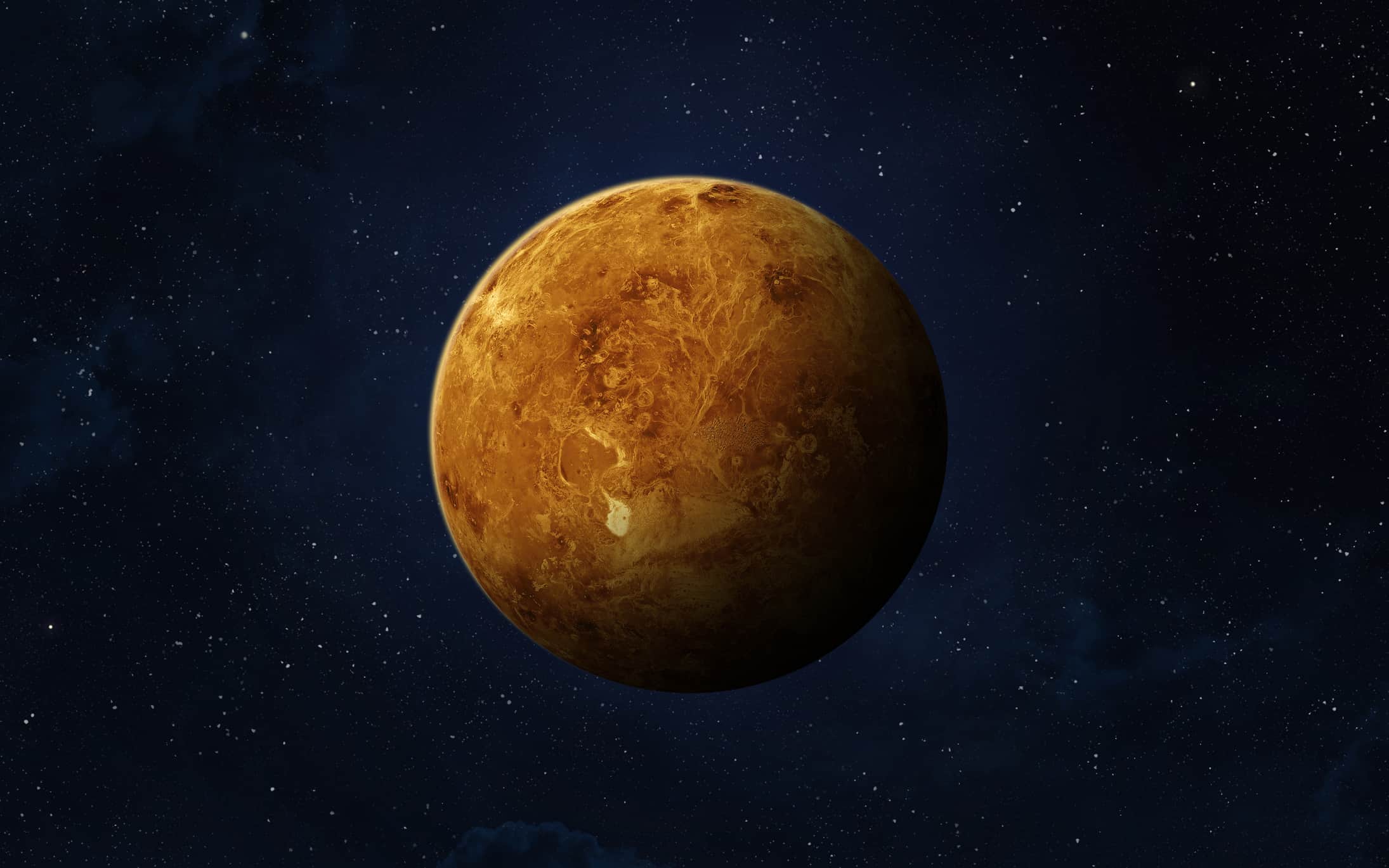Besides bearing the name of the Roman goddess of love and beauty, Venus is also known as the morning or evening star. This is because it rises and sets each day. It always appears close to the Sun due to its orbit being nearer to our star than Earth’s. But just because humans associate this goddess with love and romance doesn’t mean the planet itself is pleasant. On the contrary, it’s one of the most inhospitable celestial bodies in our solar system. So, how far away is Venus from Earth, the Sun, and other planets? Read on to find out!
How Far Away Is Venus?
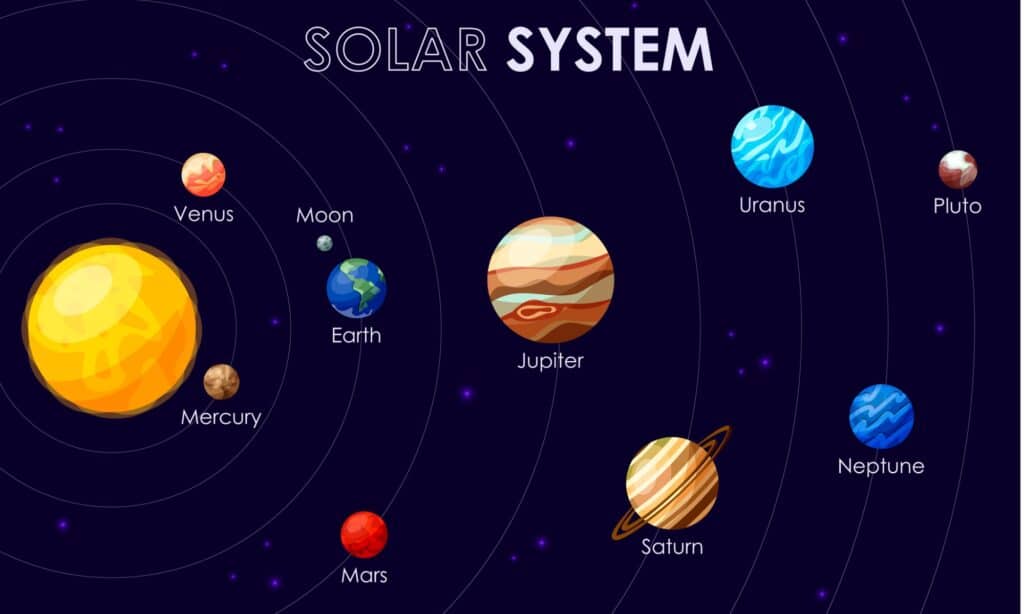
Venus is the second planet from the Sun and the second of the terrestrial planets.
©iStock.com/Alexander Timoshin
Venus lies an average of 25.7 million miles from Earth and 67 million miles from the Sun. It’s the second planet from the Sun and also the second of the four terrestrial planets. It forms a group of inner planets along with Mercury, Mars, and Earth.
There are two other common ways to measure distance in our universe. One is by using light years. A light year measures the distance light travels in one Earth year. Another way is by using astronomical units (AU). One astronomical unit is about 93 million miles, or the distance between the Earth and the Sun.
Distance From Venus to the Sun: 67 Million Miles
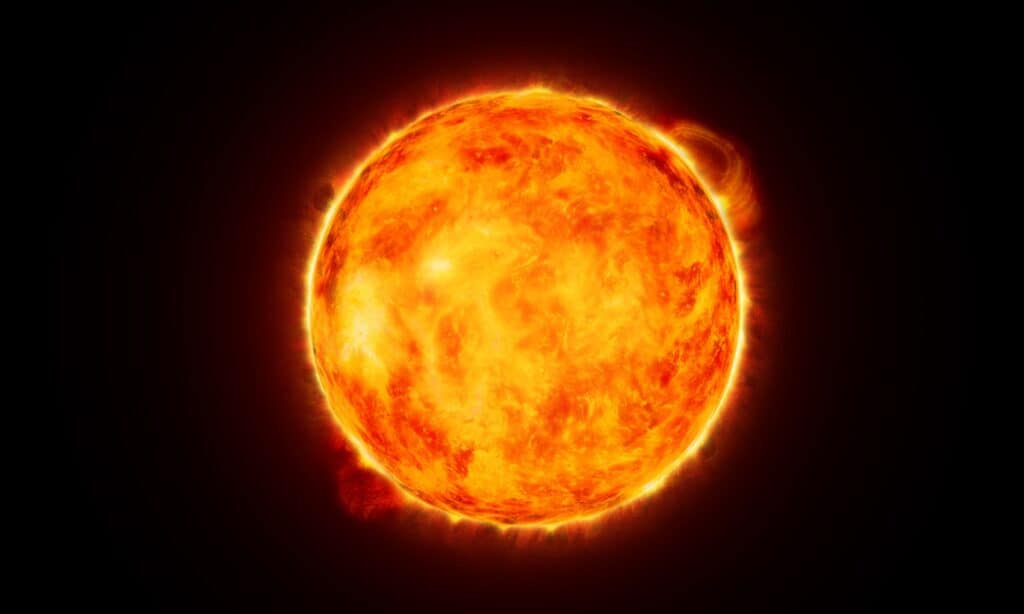
The average distance from Venus to the Sun is 67 million miles.
©iStock.com/hadzi3
The average distance from Venus to the Sun is 67 million miles or 0.7 AU. The closest it comes to the Sun (perihelion) is 66.7 million miles, while the furthest away it gets (aphelion) is 67.7 million miles. It lies about 0.000011397222266557821 light years from the Sun.
The Sun is 115 times the size of Venus, meaning 1.5 million similar-sized planets could fit inside. In part because this planet hovers so close to our star, it’s the hottest of all the planets in our solar system, up to 872°F (467°C)!
Distance From Venus to Earth: 25.7 Million Miles
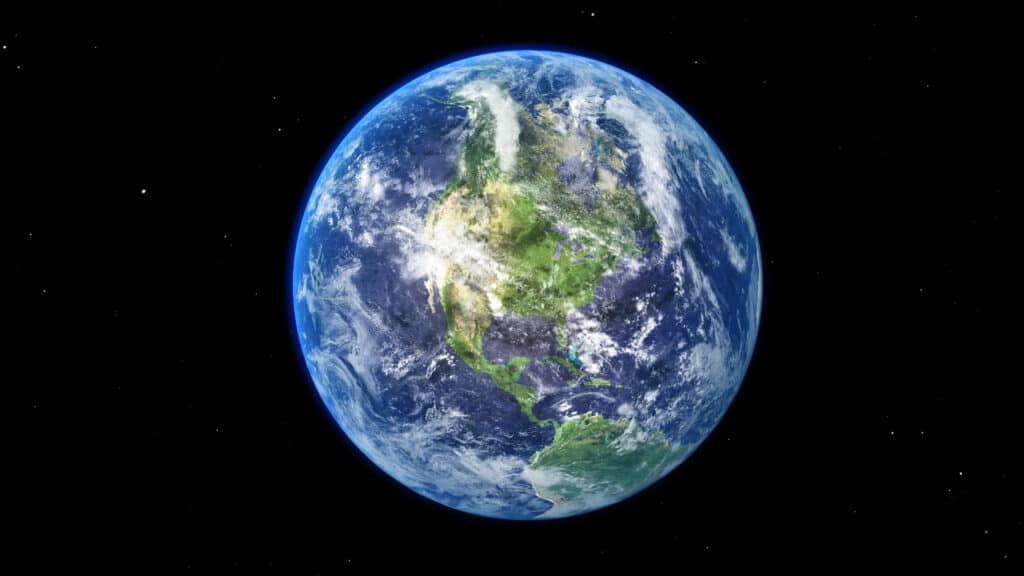
The average distance from Venus to Earth is 25.7 million miles.
©iStock.com/Thaweesak Saengngoen
The average distance from Venus to Earth is 25.7 million miles or 0.28 AU. The maximum distance between us is 162 million miles, while the minimum distance is 23.6 million miles. Venus comes closer to Earth than any other planet, though most of the time, Mercury is closer.
Astronomers often call Venus and Earth the “twin planets” for their similarity in size. Venus has a diameter of 7,521 miles, while Earth boasts just slightly more at 7,926 miles. Earth also has a slightly greater mass. Their atmospheres and climates could not be more different, however; even at its most extreme, Earth is a far cry from its twin’s heat- and pressure-blasted landscape.
Distance From Venus to Mercury: 31.3 Million Miles

The average distance from Venus to Mercury is 31.3 million miles.
©iStock.com/FlashMyPixel
The average distance from Venus to Mercury is 31.3 million miles or 0.34 AU. Mercury is the second hottest planet in the solar system, with temperatures up to 800°F (430°C). These two planets are similar in composition, though Mercury has almost no atmosphere. By contrast, the Venusian atmosphere is the thickest of the 8 planets.
Distance From Venus to Mars: 74.4 Million Miles
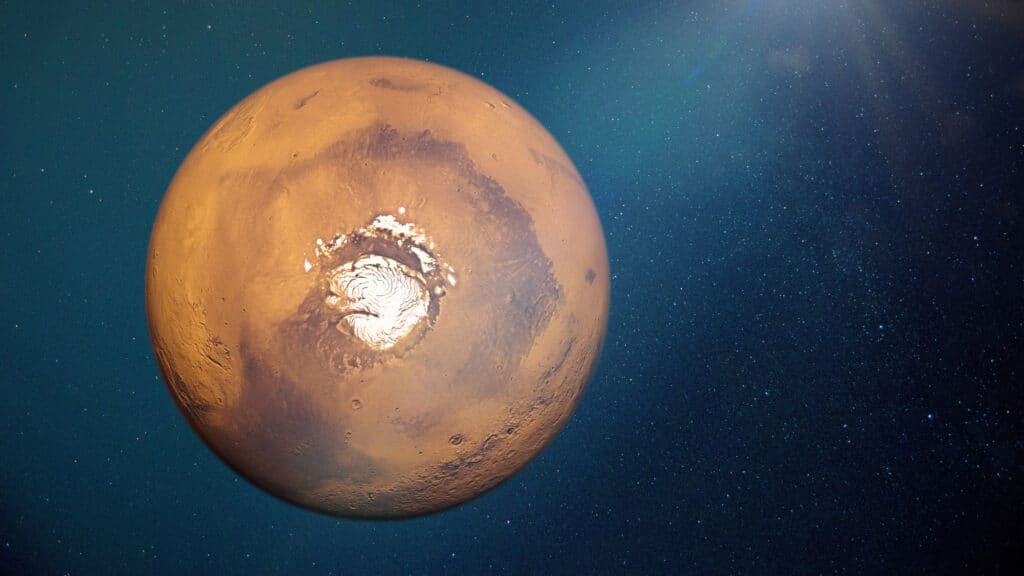
The average distance from Venus to Mars is 74.4 million miles.
©iStock.com/dottedhippo
The average distance from Venus to Mars is 74.4 million miles or 0.8 AU. Though relationship gurus often contrast these two planets, their atmospheres are surprisingly similar, composed of about 95% carbon dioxide. Mars’s atmosphere is much thinner, however, and its temperatures are much colder, plunging as low as -220°F (-140°C).
Distance From Venus to Jupiter: 416.4 Million Miles
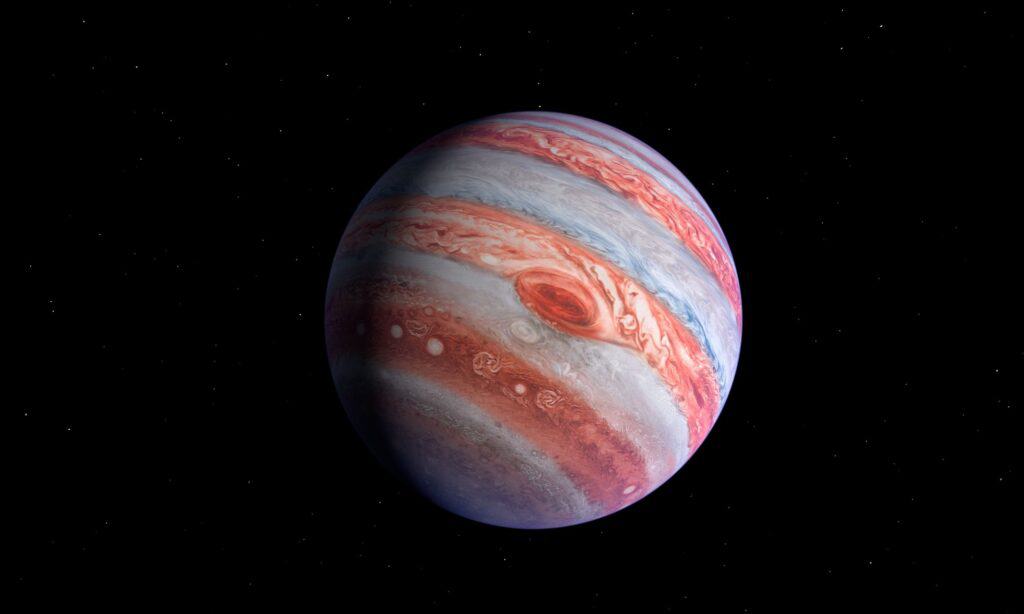
The average distance from Venus to Jupiter is 416.4 million miles.
©joshimerbin/Shutterstock.com
The average distance from Venus to Jupiter is 416.4 million miles or 4.48 AU. Scientists sometimes call Jupiter the “king of the planets,” and with good reason. It’s the largest planet in our solar system, able to hold all the other planets inside itself at once, with a diameter of 88,846 miles. In fact, Jupiter is 11.8 times bigger than Venus, easily dwarfing it.
Distance From Venus to Saturn: 817.9 Million Miles

The average distance from Venus to Saturn is 817.9 million miles.
©iStock.com/Elen11
The average distance from Venus to Saturn is 817.9 million miles or 8.8 AU. These two planets differ in several ways, including their moons and rings. Saturn has plenty of both, with 53 confirmed moons and 7 intricate rings. Venus, on the other hand, lacks both. Saturn is also much bigger, with a diameter of 72,400 miles. It is one of our system’s gas giants, mostly composed of hydrogen and helium in contrast to the rocky terrestrial planets.
Distance From Venus to Uranus: 1.72 Billion Miles

The average distance from Venus to Uranus is 1.72 billion miles.
©iStock.com/IncrediVFX
The average distance from Venus to Uranus is 1.72 billion miles or 18.49 AUs. Uranus has the reputation of being the coldest planet in the solar system, with temperatures as low as -371°F (-224°C). It’s also very windy, though not quite as bad as Neptune, which boasts wind speeds of up to 1,200 miles per hour (almost 2,000 kilometers per hour). Venusian winds are considerably less intense, with speeds near the surface only reaching a few miles per hour on average. However, its upper clouds move at speeds of up to 224 miles per hour (360 kilometers per hour).
Distance From Venus to Neptune: 2.73 Billion Miles

The average distance from Venus to Neptune is 2.73 billion miles.
©iStock.com/3quarks
The average distance from Venus to Neptune is 2.73 billion miles or 29.37 AU. Neptune’s year lasts a staggering 165 years, while the Venusian year only lasts 225 days. However, the Venusian day is unbelievably long. While a day on Neptune lasts a mere 16 hours, a day on Venus – one rotation of the planet – stretches 243 Earth days, longer than its own year! It also doesn’t have seasons due to the very slight 3° tilt of its axis.
How Long Does It Take to Travel From Venus to Earth?
It takes as little as 3 months to travel to Venus from Earth. Like all our solar system’s planets, it follows an elliptical orbit, which inscribes the shape of an oval around the Sun. This means that its closest and furthest points change over time.
The first spacecraft to visit Venus or any other planet was NASA’s Mariner 2. It flew by the planet on December 14, 1962. Its scan lasted 42 minutes before it moved on. Since then, several more spacecraft have visited the planet. The first to land was the Soviet Union’s Venera 7 on December 15, 1970. The lander lasted only 23 minutes before being destroyed by the harsh Venusian conditions. The last spacecraft to land on the planet, the Soviet Union’s Vega 2, did so in 1985. It lasted a total of 52 minutes. New unmanned missions to Venus are currently in the works.
Is Venus Visible From Earth?
Venus is the most visible natural object in our sky, next to the Sun and the Moon. It can easily be seen with the naked eye, though binoculars or a telescope will greatly improve the viewing experience. To find the morning star for yourself, check out this guide.
Has Anyone Ever Set Foot on Venus?
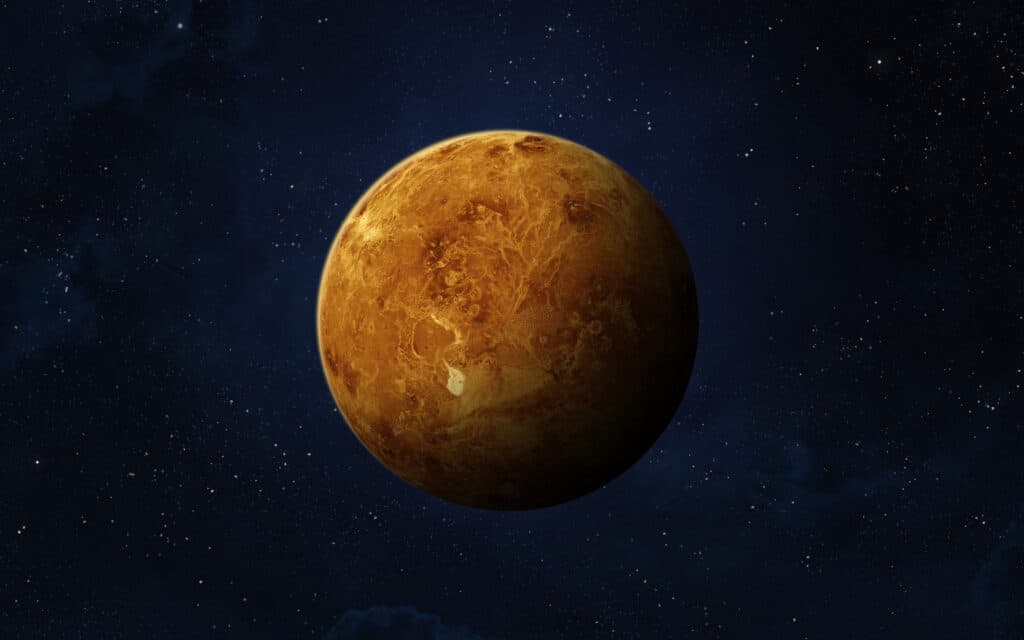
No human has ever set foot on Venus.
©iStock.com/buradaki
No human has ever set foot on Venus. Although it has a solid surface, unlike its cousins, the gas giants, the conditions are unendurable by humans, even in a modern spacecraft. Spacecraft descending to the planet’s surface have been unable to survive longer than just over 2 hours. The Soviet Union’s Venera 13 probe set this record in 1981.
Venusian Climate and Lifeforms
The climate of Venus is extremely forbidding. Surface temperatures are high enough to melt lead, giving living things no chance at survival. The crushing pressure and unbreathable atmosphere only add to this effect. Mountains, craters, volcanoes, and lava cover its surface, rendering it a treacherous place to live even if one could survive everything else. Not even microorganisms appear to live there.
Besides all this, scientists have found no evidence of water on the planet. It is doubtful that life ever existed there or ever will.
Among the most beautiful natural objects in our sky, Venus stands morning and evening as a shining celestial beacon. The next time you see what looks like a bright star next to the rising or setting Sun, chances are you’re looking at this fascinating planet!
Check out this article on “How Much You’d Weigh On Venus.”
Thank you for reading! Have some feedback for us? Contact the AZ Animals editorial team.

